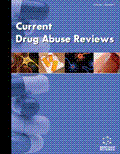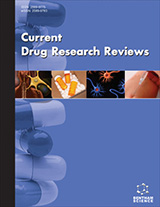Abstract
Substances known as psychedelics, hallucinogens and entheogens have been employed in ethnomedical traditions for thousands of years, but after promising uses in the 1950’s and 1960’s they were largely prohibited in medical treatment and human research starting in the 1970’s as part of the fallout from the war on drugs. Nonetheless, there are a number of studies which suggest that these substances have potential applications in the treatment of addictions. While these substances are generally classified as Schedule I, alleging no established medical uses and a high drug abuse potential, there is nonetheless evidence indicating they might be safe and effective tools for short term interventions in addictions treatment. Evidence suggests that the psychedelics have a much greater safety profile than the major addictive drugs, having extremely low levels of mortality, and producing little if any physical dependence. This paper reviews studies evaluating the use of LSD, peyote, ibogaine and ayahuasca in the treatment of dependencies and the possible mechanisms underlying the indications of effectiveness. Evidence suggests that these substances help assist recovery from drug dependency through a variety of therapeutic mechanisms, including a notable “after-glow” effect that in part reflects their action on the serotonin neurotransmitter system. Serotonin has been long recognized as central to the psychedelics’ well-known phenomenological, physical, emotional and cognitive dynamics. These serotonin-based dynamics are directly relevant to treatment of addiction because of depressed serotonin levels found in addict populations, as well as the role of serotonin as a neuromodulators affecting many other neurotransmitter systems.
Keywords: Ayahuasca, entheogens, hallucinogens, ibogaine, LSD, peyote, psychedelics, psychointegrator.
Current Drug Abuse Reviews
Title:Psychedelics as Medicines for Substance Abuse Rehabilitation: Evaluating Treatments with LSD, Peyote, Ibogaine and Ayahuasca
Volume: 7 Issue: 2
Author(s): Michael Winkelman
Affiliation:
Keywords: Ayahuasca, entheogens, hallucinogens, ibogaine, LSD, peyote, psychedelics, psychointegrator.
Abstract: Substances known as psychedelics, hallucinogens and entheogens have been employed in ethnomedical traditions for thousands of years, but after promising uses in the 1950’s and 1960’s they were largely prohibited in medical treatment and human research starting in the 1970’s as part of the fallout from the war on drugs. Nonetheless, there are a number of studies which suggest that these substances have potential applications in the treatment of addictions. While these substances are generally classified as Schedule I, alleging no established medical uses and a high drug abuse potential, there is nonetheless evidence indicating they might be safe and effective tools for short term interventions in addictions treatment. Evidence suggests that the psychedelics have a much greater safety profile than the major addictive drugs, having extremely low levels of mortality, and producing little if any physical dependence. This paper reviews studies evaluating the use of LSD, peyote, ibogaine and ayahuasca in the treatment of dependencies and the possible mechanisms underlying the indications of effectiveness. Evidence suggests that these substances help assist recovery from drug dependency through a variety of therapeutic mechanisms, including a notable “after-glow” effect that in part reflects their action on the serotonin neurotransmitter system. Serotonin has been long recognized as central to the psychedelics’ well-known phenomenological, physical, emotional and cognitive dynamics. These serotonin-based dynamics are directly relevant to treatment of addiction because of depressed serotonin levels found in addict populations, as well as the role of serotonin as a neuromodulators affecting many other neurotransmitter systems.
Export Options
About this article
Cite this article as:
Winkelman Michael, Psychedelics as Medicines for Substance Abuse Rehabilitation: Evaluating Treatments with LSD, Peyote, Ibogaine and Ayahuasca, Current Drug Abuse Reviews 2014; 7 (2) . https://dx.doi.org/10.2174/1874473708666150107120011
| DOI https://dx.doi.org/10.2174/1874473708666150107120011 |
Print ISSN 1874-4737 |
| Publisher Name Bentham Science Publisher |
Online ISSN 1874-4745 |
 164
164Related Articles
-
Oxidative RNA Damage and Neurodegeneration
Current Medicinal Chemistry Effects of Bioactive Compounds from Carrots (Daucus carota L.), Polyacetylenes, Beta-Carotene and Lutein on Human Lymphoid Leukaemia Cells
Anti-Cancer Agents in Medicinal Chemistry Fragment-Based Optimization of Small Molecule CXCL12 Inhibitors for Antagonizing the CXCL12/CXCR4 Interaction
Current Topics in Medicinal Chemistry The Use of SIFT-MS to Investigate Headspace Aldehydes as Markers of Lipid Peroxidation
Current Analytical Chemistry MicroRNAs: Key Regulators in Lung Cancer
MicroRNA Synthesis and Biological Evaluation of Quinazoline Derivatives as Potential Anticancer Agents (II)
Anti-Cancer Agents in Medicinal Chemistry Single Chemical Entity Legal Highs: Assessing the Risk for Long Term Harm
Current Drug Abuse Reviews Introduction to the Chirality of Resorcinarenes
Mini-Reviews in Organic Chemistry Antioxidant Activity of New Benzo[de]quinolines and Lactams: 2DQuantitative Structure-Activity Relationships
Medicinal Chemistry Inhibition of Major Drug Metabolizing CYPs by Common Herbal Medicines used by HIV/AIDS Patients in Africa– Implications for Herb- Drug Interactions
Drug Metabolism Letters Plant Glycosides and Aglycones Displaying Antiproliferative and Antitumour Activities – A Review
Current Bioactive Compounds Multi-Component Synthesis of 6-Alkoxy-2-Amino-3,5-Dicyanopyridines
Letters in Organic Chemistry Headspace Gas Chromatography Methods and their Potential Industrial Applications
Current Chromatography Folic Acid Can Contribute to Memory Deficit and Na+, K+- ATPase Failure in the Hippocampus of Adolescent Rats Submitted to Hypoxia- Ischemia
CNS & Neurological Disorders - Drug Targets Hesperetin Liposomes for Cancer Therapy
Current Drug Delivery Inhibitors of the Sphingosine Kinase Pathway as Potential Therapeutics
Current Cancer Drug Targets Potential Natural Compounds for the Prevention and Treatment of Nonalcoholic Fatty Liver Disease: A Review on Molecular Mechanisms
Current Molecular Pharmacology Formulation and Characterization of Anthocyanins-Loaded Nanoparticles
Current Drug Delivery Preparation, Characterization, and In Vitro Release of Vinorelbine Tartrate (VLBT)- Loaded Folate-conjugated Recombination Human Serum Albumin (rHSA) Nanoparticles with Different Degree of Cross-linking
Current Nanoscience A Simple Approach to DC-Cholesterol, its Analogues and Vitamin D-Based Cationic Lipids for Gene Therapy
Letters in Organic Chemistry
















